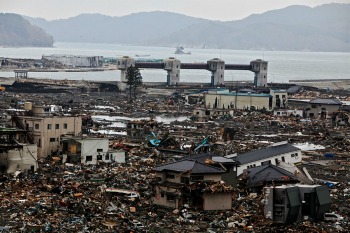The planet is changing at a rapid level. Many changes are taking places that are not always good for everyone on land or even those in water. You may not be able to see all these changes by simply looking outside your window, numerous things are happening on a global scale that has a big impact on virtually everyone on the planet. Climate change, for instance, is no longer just a threat but a reality we are all facing every single day. The ocean is rising and so is the planet heating up. They may all seem irrelevant to the ordinary man but they play a big role to how the world works as a whole. And when you hear someone saying we are now in the midst of an environmental crisis, it can’t be any truer.
 Everything we do, big or small, has an impact on the world. If we want to protect the planet and make sure we don’t suffer that often in the hands of Mother Nature, let us also reduce our carbon footprint and we should practice more environment-friendly ways in everything we do. Even the little things we do count a lot in saving the world and somehow making it a better place for each and every one of us. Nobody will help us except ourselves. In the end, it is us who will also suffer if we don’t step up and do something about all the environmental issues we are facing because after all, we only have one planet to live in. Let’s stop making it unlivable by cleaning up our acts and considering how the environment will be affected in all of our actions.
Everything we do, big or small, has an impact on the world. If we want to protect the planet and make sure we don’t suffer that often in the hands of Mother Nature, let us also reduce our carbon footprint and we should practice more environment-friendly ways in everything we do. Even the little things we do count a lot in saving the world and somehow making it a better place for each and every one of us. Nobody will help us except ourselves. In the end, it is us who will also suffer if we don’t step up and do something about all the environmental issues we are facing because after all, we only have one planet to live in. Let’s stop making it unlivable by cleaning up our acts and considering how the environment will be affected in all of our actions.
The proposal to have environmental education as a subject in schools has been finalised.
Natural Resources and Environment Minister Datuk Seri Wan Junaidi Tuanku Jaafar today said he was ready to discuss the proposal with the Education Minister.
He said top officials from his ministry and the Education Ministry have been discussing the proposal for months and those in the discussions were receptive to the idea of having such a subject.
"Once I get the report from the deputy secretary-general, who headed the ministry in the talks with the Education Ministry, discussions between the Education Minister and I can start.
And since the youth is the future of any nation, it is only logical to start educating the youth about the importance of the environment and what measures can be done to safeguard it from further harm. Human activities are the number one reason why the planet is what it is today. Our abuse and misuse of natural resources have led to widespread natural disasters that took human lives aside from destroying properties and ravaging communities. Looking at the state of the environment right now, it is inevitable for stronger and more destructive natural calamities to come and wreak havoc on human lives at the rate things are going now. Only through education can we do something big that can have a lasting impression to everyone as to why the environment needs protection.
Tens of millions of people will be forced from their homes by climate change in the next decade, creating the biggest refugee crisis the world has ever seen, according to a new report.
Senior US military and security experts have told the Environmental Justice Foundation (EJF) study that the number of climate refugees will dwarf those that have fled the Syrian conflict, bringing huge challenges to Europe.
“If Europe thinks they have a problem with migration today … wait 20 years,” said retired US military corps brigadier general Stephen Cheney. “See what happens when climate change drives people out of Africa – the Sahel [sub-Saharan area] especially – and we’re talking now not just one or two million, but 10 or 20 [million]. They are not going to south Africa, they are going across the Mediterranean.”
You can probably see it in the news right now. Every now and then there is this awful disaster that destroys towns and cities and leaves people displaced for weeks, even months on end. Recovery is often a slow and painful process and it can break you in ways that you’ve never imagined before. If you don’t want to suffer and turn your life upside down especially if you live in a high-risk area, do your part in saving the planet today, not tomorrow. Try to influence and educate others as to why we need to pitch in and do our part in environmental conservation efforts rather than just rely on the government and big organizations to initiate and work on conserving the planet and its vast resources before the time comes when we are too late for saving.
In The Midst Of An Environmental Crisis Find more on: https://www.keatingeconomics.com/
source https://www.keatingeconomics.com/in-the-midst-of-an-environmental-crisis/

















